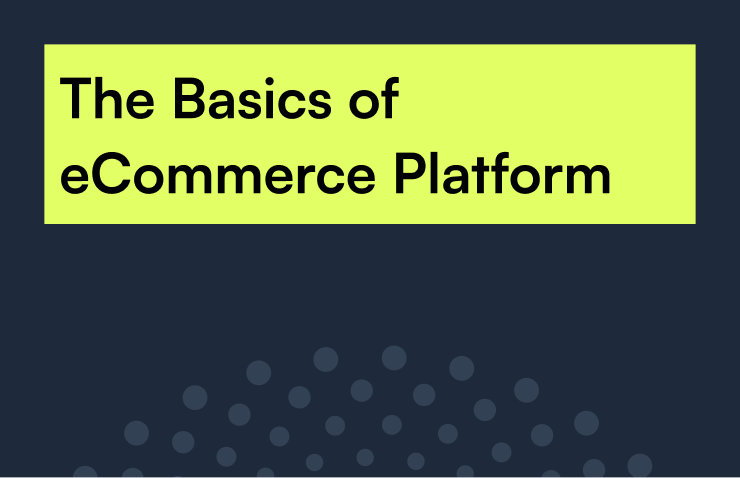Magento 2 Migration Service
Since 2008, Magento 1 has served as one of the leading ecommerce platforms for online merchants around the world. Originally introduced as an open source platform, Magento gave businesses full control over their site, allowing them to make changes as their business and brand evolved.
Years after the release of Magento 1, Magento 2 (now Adobe Commerce) was released. The new edition addressed some shortcomings of Magento 1 and provided users with many new features, taking the platform to a whole other level. M2 offers scalability and control on an even greater level than the original version. It’s open source foundation has resulted in the creation of endless extensions, themes, and features being created by web developers around the world.
Why make the shift from M1 to M2?
Other than the fact that support for Magento 1 ends in June of 2020, there are other factors to consider when deciding that migration to Magento 2 is the right move for you. One of these factors being that innovation in M1 is not going to continue. It isn’t going to grow and improve in the final months of their support still being available. M1 is being phased out to make room for people to get on board with M2. Magento 2 is the future, and now is the time to shift.
Notable architectural differences
Magento 2 was made with Magento 1’s shortcomings in mind. A main issue of the M1 platform was the store performance. This has been significantly improved with M2 by adding various new technologies including
- Apache
- Composer
- Symfony
- Nginx 1.7
The stores speed is also improved due to the fact that Magento 2 supports the latest PHP versions. Other improvements in the platform’s architecture include better browser caching for static content and reduction in unnecessary browser’s operations.
Architectural features of M2:
- Apache 2.2/2.4
- Nginx 1.7 or greater
- PHP 5.6.x/ 7.0.2/ 7.0.6
- MySQL / MySQL Percona 5.6.x or greater
- Varnish 3.x / 4.x
- Redis 2.x / 3.x or Memcached 1.4.x
- Solr 4.x
- MTML5
- CSS3
- JQuery
- RequireJS / Knockout.js
- Zend Framework 1 / 2
- Symfony
- Composer
- PSR – 0 / 1 / 2 / 3 / 4
When compared to M1, M2’s page load speed is significantly faster due to full-page caching
Magento 2’s Extensions
There are a lot of extensions built by 3rd party developers out there that have caused some problems when 2 or more extensions would try to rewrite the same functionality. This issue was eventually resolved manually. However, with M2, extensions are able to overlap core code instead of overriding it. Installing new extensions is now easier than ever because of this update to the Magento platform.
Why Else Should You Migrate?
Magento 2 is easy to navigate within all parts of the admin panel as well as from a consumer’s point of view. The dashboard helps to monitor your business by displaying the following:
- Lifetime sales
- Last orders
- Average orders
- Top search items
- Revenue tax
- Best selling items & customers
- Shipping
- Quantity
It can be extremely beneficial to your business to have everything organized right in front of you on the dashboard. Displaying what aspects of business have been a success and what aspects of business need improvement will give a clear picture of steps to take in order to increase sales and improve customer experience.
Security is another feature which has been improved upon with M2, as passwords have been made stronger and less vulnerable to hacks by strengthening hashing algorithms.
What to Know Before You Migrate
Now that you’ve been educated on the benefits of making the shift over to Magento 2, here’s what you need to know before doing so. The first thing is to know your website. Check to see what’s compatible with your new M2 site in terms of themes, extensions, and code. Your Magento 1 store can actually be cloned for the migration process. This seems to be the more efficient of doing things rather than using the live store.
There is an extension called the Legacy Orders Module which was created by a company called Web Solutions NYC to help users of the Magento platform migrate seamlessly without losing valuable order history information in the process. With this module, the customer is able to see a history of all past orders from your site. This is especially useful to customers to order business-to-business and need to access order history. This order history helps transition from M1 to M2 by providing you with a downloadable record of archived customer orders, quantities, shipping date, and item number. It will appear as a CSV file to website admins and will appear on the front end under “archived orders.”
Also from Web Solutions NYC is something called the FastTrack program. The Magento 2 FastTrack program includes an all-in-one package that delivers an increased ROI and a faster time-to-market. The most popular customer modules are included free with a Magento 2 development and implementation project.
The most important thing of all when making this transition is finding a team of developers who will get it done right. You need a team of people who will be there to make changes and offer the support you need. It’s also beneficial to work with developers who make Magento their main focus, rather than developers who are used to working with an array of platforms. Web Solutions NYC is an excellent example of a team who’s made up of Magento certified developers. They work exclusively with the Magento platform so they know it inside out. Click HERE to set up a demo and learn exactly how Web Solutions NYC will work with you to create the best online store for your business through Magento 2.



